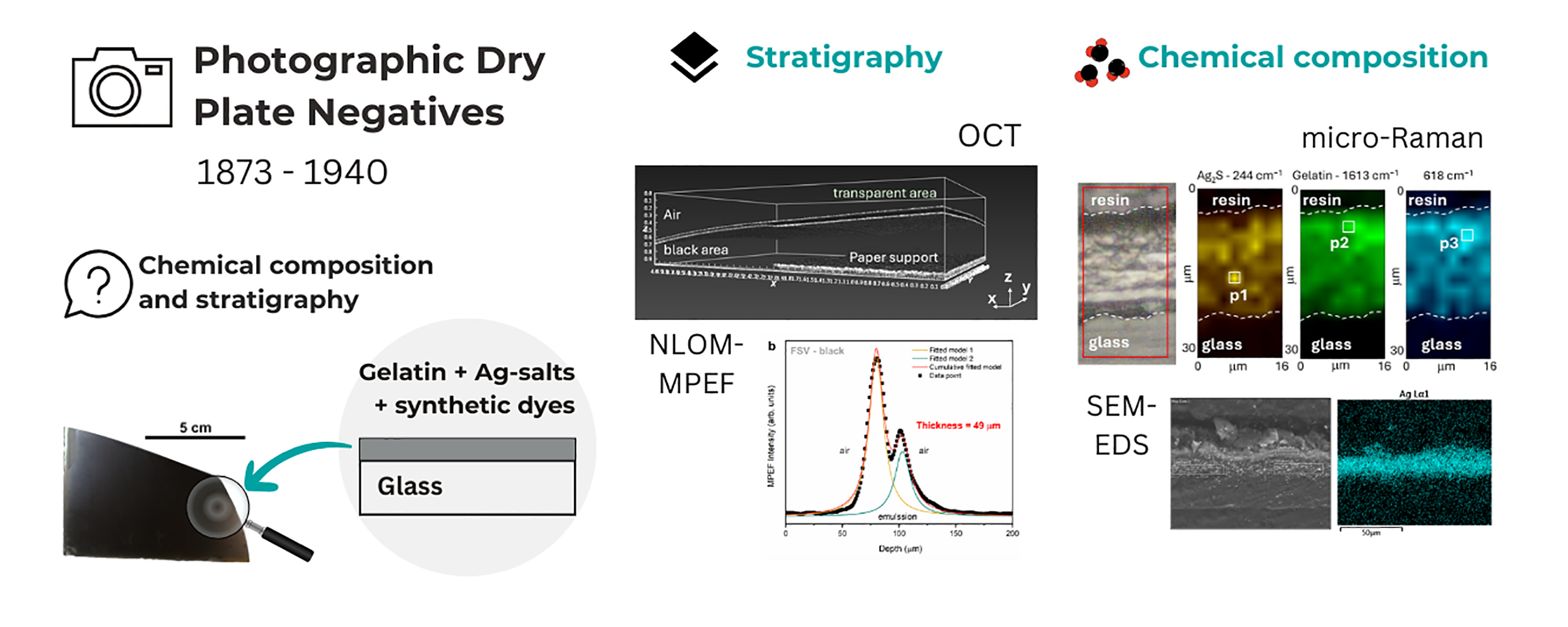Dry plate photographic negatives, introduced in the late 19th century, represent a turning point in the history of photography.

However, their chemical complexity and fragile nature pose serious challenges for conservators. A recent study led by researchers from CNR-INO (Florence) and CSIC (Madrid), in collaboration with the Opificio delle Pietre Dure and the Museo Galileo, has taken a deep dive into the layered structure of these artifacts using a powerful combination of analytical techniques.
The research focused on gelatin-based dry plates, exploring their stratigraphy—the detailed layering and composition of their emulsion—and the materials used in their creation. The team applied an impressive multi-analytical approach that combined optical and electron microscopies, laser-based methods, and spectroscopic tools to gather as much information as possible without damaging the precious originals.
A highlight of the study was the use of Multi-photon Excitation Fluorescence (MPEF), a modality of Non-linear Optical Microscopy (NLOM). This technique allowed researchers to probe internal layers of the emulsions more effectively than traditional optical methods, which often struggle due to light absorption by the darkened gelatin layers.
Complementary techniques such as Laser-Induced Breakdown Spectroscopy (LIBS), micro-Raman spectroscopy, and Scanning Electron Microscopy with Energy Dispersive X-ray Spectroscopy (SEM-EDS) provided crucial information about the elemental and molecular composition of the negatives. For instance, synthetic dyes—often added during manufacture—could be identified and used to classify different types of plates.
Why does this matter? Understanding the chemical and physical structure of dry plate negatives is essential to preserving them. These objects, often affected by delamination, flaking, and fading, are valuable not only for their historical content but also as material witnesses of early photographic technologies. By uncovering the materials and methods used in their creation, this study offers vital data that can inform targeted conservation strategies.
This research underscores the importance of interdisciplinary collaboration in the field of heritage science. The combination of cutting-edge technology and conservation expertise opens new pathways to safeguard fragile photographic collections, ensuring they remain accessible for future generations.